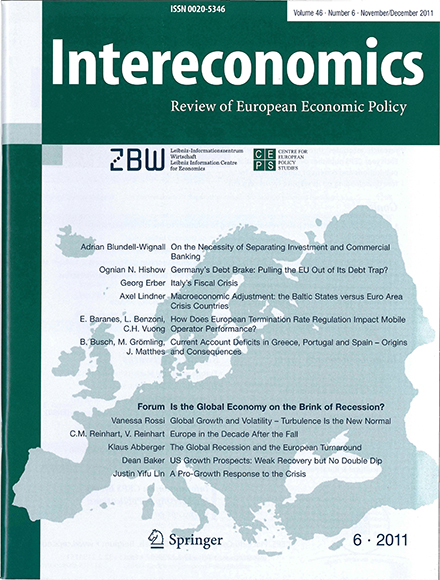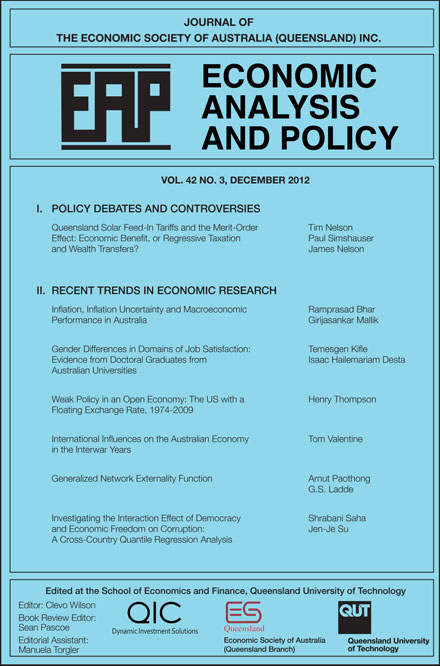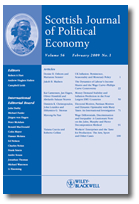Volatilität, Wachstum und Finanzkrisen
Diese Forschungsgruppe analysiert die Entstehung von Instabilitäten im Finanzsystem und die realökonomischen Konsequenzen von Finanzkrisen. Dabei werden kausale Reaktionen gesamtwirtschaftlicher Größen auf makroökonomische Schocks identifiziert. Frühwarnmodelle beschreiben das zyklische Auftreten von Vulnerabilitäten im Finanzsystem.
IWH-Datenprojekt: Financial Stability Indicators in Europe
Forschungscluster
Finanzresilienz und RegulierungIhr Kontakt

Mitglied - Abteilung Makroökonomik
PROJEKTE
01.2022 ‐ 12.2023
Sovereign Risk Shocks
Deutsche Bundesbank
05.2017 ‐ 09.2019
Frühwarnmodelle für systemische Bankenkrisen: Der Effekt von Modell- und Schätzunsicherheit
Deutsche Forschungsgemeinschaft (DFG)
01.2018 ‐ 12.2018
International Monetary Policy Transmission
Deutsche Bundesbank
Referierte Publikationen
Die Verlustquote bei Handelskreditausfällen – Eine empirische Untersuchung in Deutschland
in: Zeitschrift für Controlling & Management, Nr. 2, 2012
Publikation lesen
Macroeconomic Adjustment: The Baltic States versus Euro Area Crisis Countries
in: Intereconomics, Nr. 6, 2011
Abstract
Estonia, Latvia and Lithuania have succeeded in rapidly reducing their current account deficits despite fixed exchange rates. Which factors have played a major role in this? What similarities, and what differences, do the Baltic states show compared to Greece and Portugal? What insights can be gained for the political debate on the euro area debt crisis?

Did the Crisis Affect Potential Output?
in: Applied Economics Letters, Nr. 8, 2011
Abstract
Conventional Phillips-curve models that are used to estimate the output gap detect a substantial decline in potential output due to the present crisis. Using a multivariate state space model, we show that this result does not hold if the long run role of excess liquidity (that we estimate endogeneously) for inflation is taken into account.

New IMF Lending Facilities and Financial Stability in Emerging Markets
in: Economic Analysis and Policy, Nr. 2, 2011
Abstract
In the light of the current global financial and economic crisis, the International Monetary Fund (IMF) has undertaken some major reforms of its lending facilities. The new Flexible Credit Line and the High Access Precautionary Arrangements differ from what has been in place so far, by allowing for ex ante conditionality. This paper summarizes preconditions for effective last resort lending and evaluates the newly introduced measures, concluding that the Flexible Credit Line comes very close to what has been called an International Lender of Last Resort. The main obstacles are the low demand and slow progress in complementary reforms.

Government Interventions in Banking Crises: Effects of Alternative Schemes on Bank Lending and Risk-taking
in: Scottish Journal of Political Economy, Nr. 2, 2012
Abstract
We analyse the effects of policy measures to stop the fall in loan supply following a banking crisis. We apply a dynamic framework in which a debt overhang induces banks to curtail lending or to choose a fragile capital structure. Government assistance conditional on new banking activities, like on new lending or on debt and equity issues, allows banks to influence the scale of the assistance and to externalise risks, implying overinvestment or excessive risk taking or both. Assistance without reference to new activities, like granting lump sum transfers or establishing bad banks, does not generate adverse incentives but may have higher fiscal costs.















